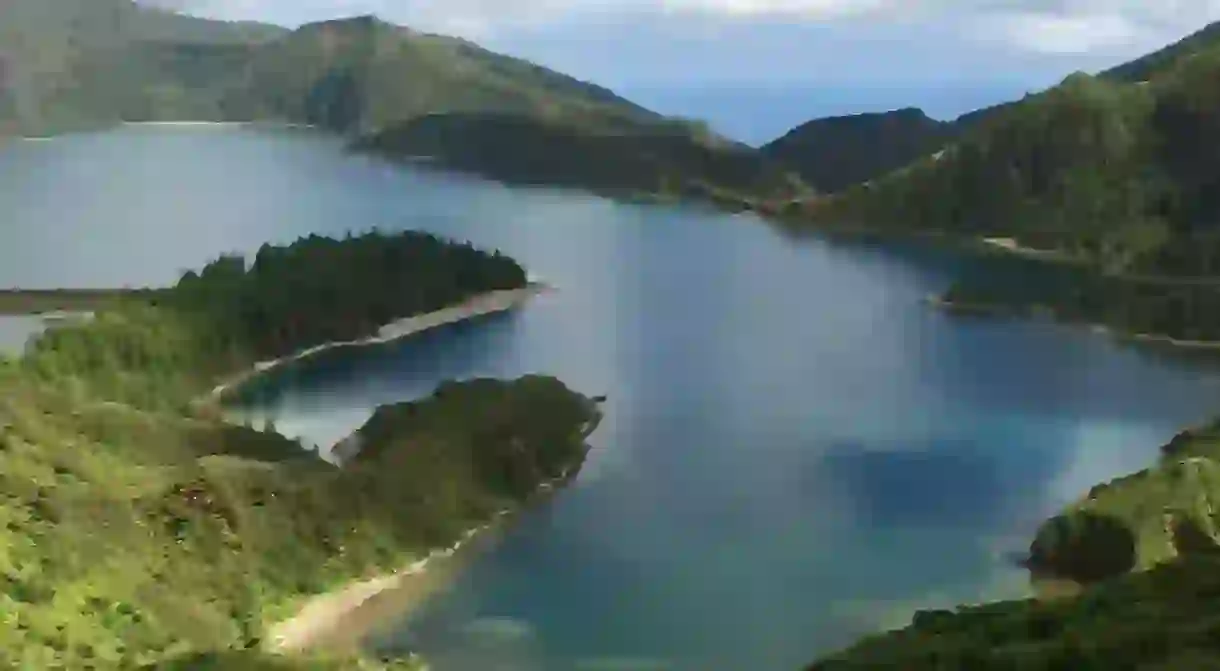Meet Agnieszka Gratza, Who Chases After Volcanoes (and 'Takes Them Out for a Swim’)

Agnieszka Gratza has collected dreams during an artist residency at a hotel, staged tableaux vivants of the Annunciation, and made a series of edible artworks using saffron. Most recently, however, she has been chasing after volcanoes – from Santorini in the Aegean to São Miguel in the Azores – for an epic book of volcanic swims.
Agnieszka Gratza has no fixed abode, she’s a “drifter,” always kept busy pursuing an artistic project that flirts with poetry. One of her most intriguing ideas has been to “take a volcano out for a swim.”
“The project began in May 2015 when I was invited to do a residency at Santozeum Museum in Thira, Santorini,” Gratza tells Culture Trip. “This was to write about swimming in the sulfurous waters of the caldera, which is incredibly deep. At the time I was already planning to visit São Miguel in the Azores, which has several breathtaking crater lakes, including Lagoa do Fogo (meaning ‘Lagoon of Fire’) where I got to swim.”
“Volcanic swimming is highly addictive, I soon discovered. In the last two years, I have swam around volcanic islets in Iceland and Greece, next to a working sulfur mine known for its blue fires in East Java, alongside the Sciara del Fuoco on Santorini and, most recently, in one of the crater lakes in the Auvergne region. I view these volcanic swims as my own personal collection.”

“At first I would swim in all sorts of wild places, but then the volcanic setting gave it a certain twist. ‘Volcanoes are sexy,’ an editor told me when I sounded him out, and this helped narrow things down.”
“For me, the appeal of volcanic swimming is elemental, since it brings into contact water and fire. We come from the sea and there are reasons to believe that life as we know it emerged in a hydro-thermal, deep-sea vent setting, as in submarine volcanoes where erupting magma mixes with sea water.”

“Volcanoes, even the extinct ones, have roots that go down deep into the earth. In his Mundus Subterraneus (1665), the 17th-century Jesuit polymath Athanasius Kircher depicts volcanic craters on the surface of the globe as all being connected to a central fiery ball in earth’s core. My imagination has also been fired up by reading Jules Verne’s 1864 novel Journey to the Center of the Earth.”
“This expression, ‘to take a volcano out for a swim’ cropped up in the context of a specific swim around Strongili, a round, volcanic islet in the midst of Kos’s caldera, off the coast of Nisyros in the Dodecanese. Nisyros itself has several active volcanic craters in the mountainous heart of the island, which emit fumes and heat but are otherwise bone-dry – and therefore useless for my purposes.”

“The way I found around this problem was to think of Nisyros in relation to the smaller, satellite island of Strongili which, seen flattened out on a map, looks remarkably like it. My idea was to invite the participants to form a mental image of the main volcanic crater on Nisyros, which is nowhere near the sea (and perfectly dry) and think of it as we swam. That’s really it. Part-meditation, part-sympathetic magic.”

“I have a soft spot for Stromboli, which is not only active but a continually erupting volcano. Not even the blue fires of Kawah Ijen match up to the beauty of cinders bursting forth and settling down on the jet-black sand up in the crater valley, before melting away like snow into the surrounding darkness, and the sight of fiery lava running down the flank of Sciara del Fuoco, the desert-like expanse on the northern side of the island, or turning the clouds shrouding the summit bright red.”

The physical shape of the book itself, where Gratza writes about these amazing swims, is an incredible spectacle of creativity.

“The folded book, also known as a leporello, is a ready-made of sorts that I brought back from a residency in Japan. As someone reminded me the other day, after the reading held at the Chambre D’embarquement (a project by Laurent Derobert supported by Galerie Hus), two basic origami folds are, fittingly, called ‘mountain’ and ‘valley’ folds.”

“The multiple folds, to me, convey at once the waves and lava flow. I chose to write the text out by hand and the writing covers only half the page: line after line of blue ink, which suggests the ripples on the sea surface, starting from the same horizon line, which is carried across the full length of the book on both sides.”
“The folded format calls for a different kind of reading: a dipping in and out of what is, after all, a collection of fragments relating 13 swims in all. I’ve run out of pages to write on, but the project does not end with the book. There are many more volcanic swims to be had out there.”













